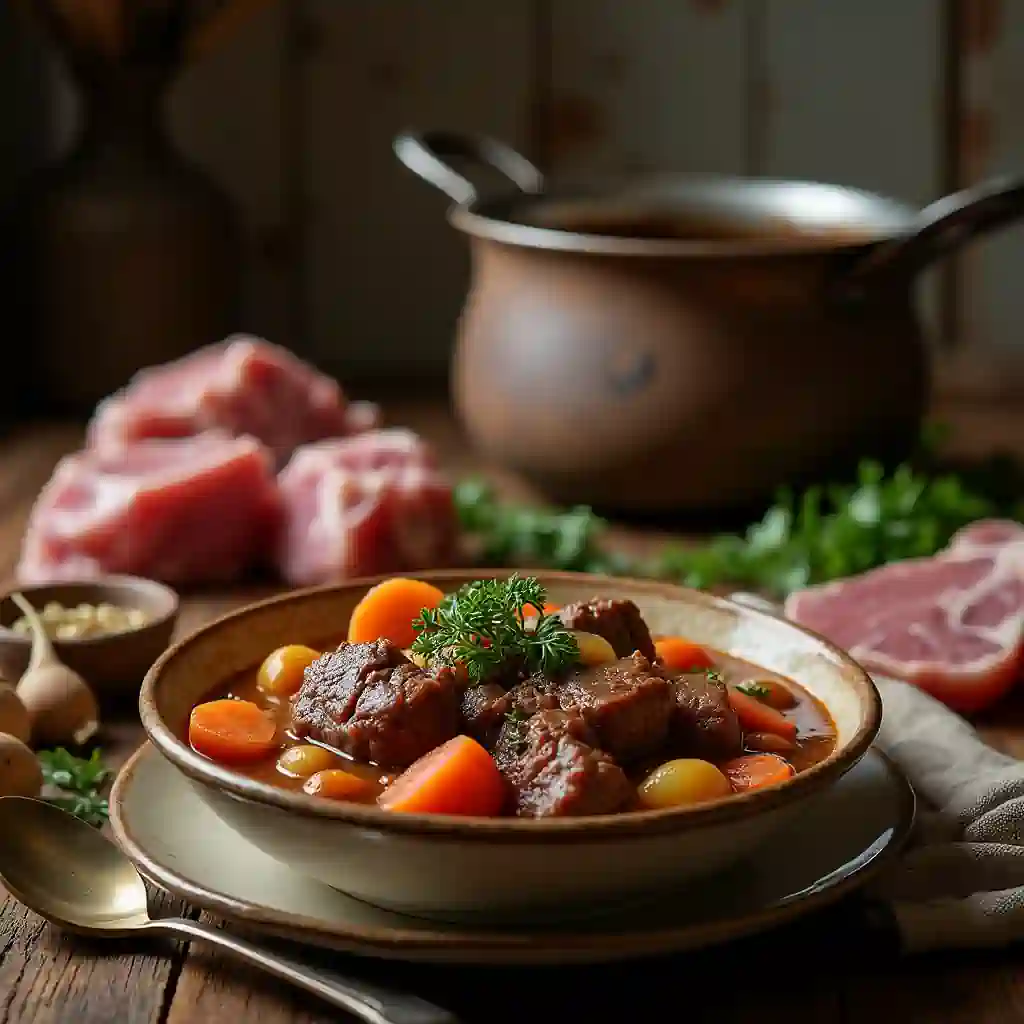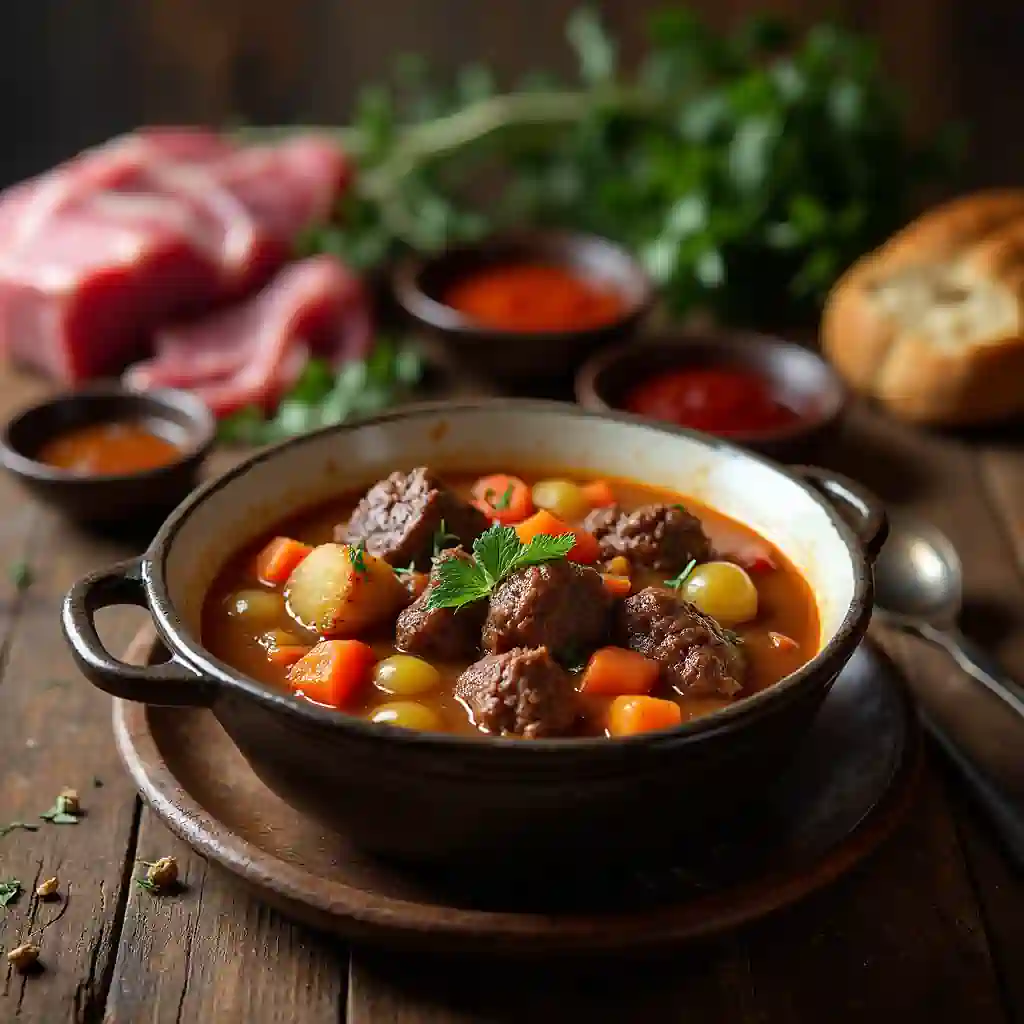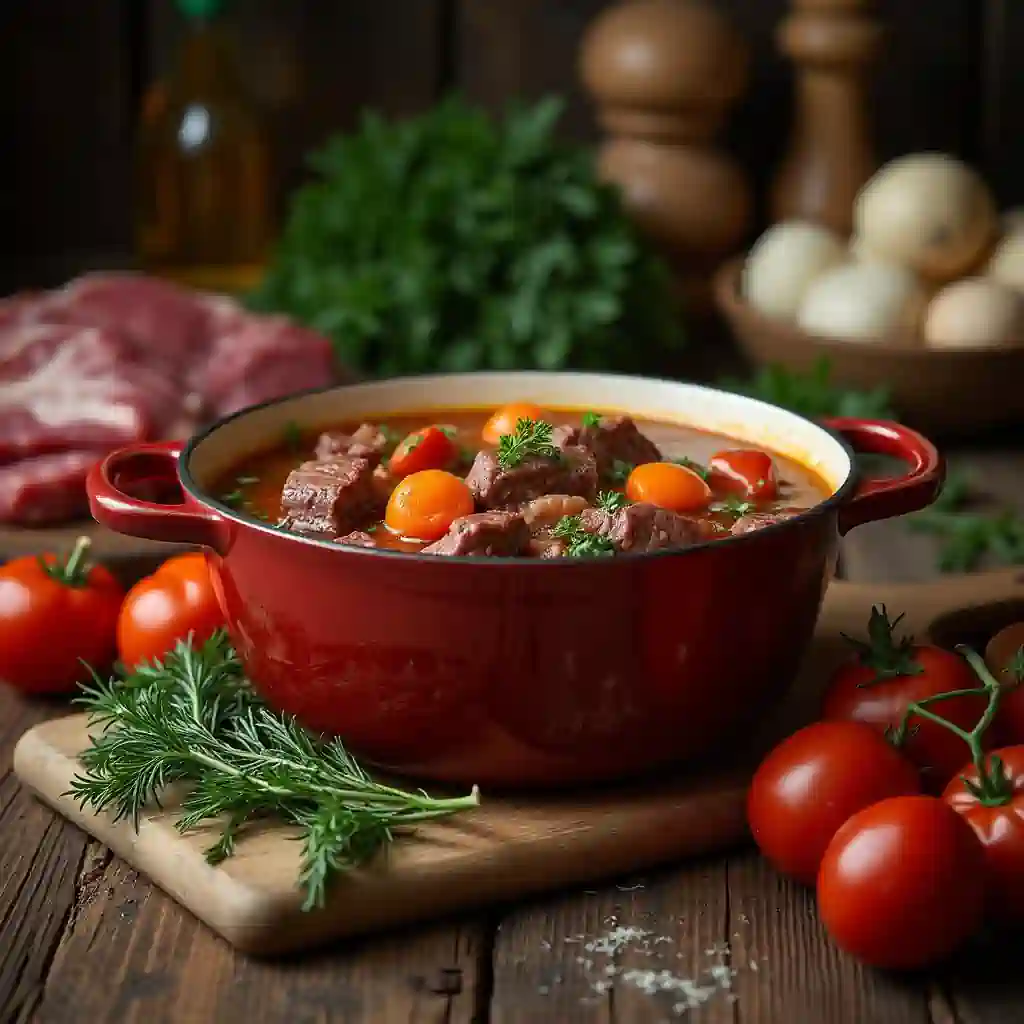63
“What If You Don’t Brown Meat For Stew? The Surprising Truth”
What happens if you dont brown meat for stew? If you’ve ever skipped this step, you might have noticed a difference in taste and texture. While it may seem like a shortcut, not browning meat for stew can significantly impact the final dish. Browning adds depth of flavor, improves texture, and enhances the overall appearance of the stew. But is it truly necessary? In this guide, we’ll explore what happens if you don’t brown meat for stew, why this step matters, and how to fix it if you’ve already skipped it.
Table of Contents
The Importance of Browning Meat for Stew
Why Browning Meat Matters
Browning meat isn’t just about making it look good—it’s a game-changer for flavor. When you sear meat over high heat, something magical happens: the Maillard reaction. This chemical process creates hundreds of new flavor compounds, giving your stew a rich, deep, and complex taste. Without browning, your stew might taste flat or one-dimensional.
“Browning meat is like adding a secret ingredient—it transforms your stew from good to unforgettable.”
But it’s not just about flavor. Browning also improves the meat’s texture, creating a delicious crust that holds up during long cooking times. Plus, it adds a beautiful color to the stew, making it look as good as it tastes.
What Happens If You Skip This Step?
So, what happens if you don’t brown meat for stew? Well, the results can be disappointing. Without that initial sear, the meat won’t develop the same depth of flavor. The stew might taste bland, and the broth could lack richness.
Texture-wise, un-browned meat can turn out mushy or less appealing. And let’s not forget about appearance—skipping this step can leave your stew looking pale and unappetizing. While it’s still safe to eat, it might not be the hearty, flavorful dish you were hoping for.
In short, browning meat is like laying the foundation for a house. Skip it, and the whole structure—your stew—might not hold up as well.
The Science Behind Browning Meat
The Maillard Reaction Explained
Ever wonder why browned meat smells so irresistible? It’s all thanks to the Maillard reaction, a chemical process that occurs when proteins and sugars in the meat react under high heat. This reaction creates hundreds of new flavor compounds, giving your stew that rich, savory depth we all love.
“The Maillard reaction isn’t just science—it’s the magic behind every great stew.”
Without this process, your stew might lack the complexity and depth that make it truly special. Think of it as the difference between a flat, one-note dish and a symphony of flavors.
How Heat Transforms Meat
Browning isn’t just about flavor—it’s also about texture. When you sear meat, the high heat causes the surface to caramelize, creating a delicious crust. This crust not only adds texture but also helps the meat retain its juices during the long cooking process.
At the same time, the heat renders fat, which adds richness to the stew. Without browning, the meat might end up greasy or soggy, and the stew’s broth could lack that deep, satisfying flavor.
In short, browning meat is like giving your stew a head start. It sets the stage for a dish that’s rich, flavorful, and utterly satisfying.
What Happens If You Don’t Brown Meat for Stew?
Flavor Consequences

If you skip browning, the first thing you’ll notice is the lack of depth in your stew’s flavor. Without the Maillard reaction, the meat won’t develop those rich, savory notes that make stew so comforting. Instead, it might taste bland or one-dimensional.
“Skipping the browning step? Your stew might taste like it’s missing its soul.”
For example, if you’re making a classic beef stew, the difference between browned and un-browned meat is like night and day. Browning adds layers of flavor that simmering alone just can’t achieve. If you’re looking for more tips on building flavor in stews, check out our guide onWhat is the One Ingredient Upgrade for Better Beef Stew?.
Texture and Appearance Issues
Texture is another big factor. Un-browned meat can become mushy or lose its bite during the long cooking process. Browning creates a crust that helps the meat hold its shape, giving your stew a more satisfying texture.
Appearance-wise, skipping this step can leave your stew looking pale and unappetizing. A well-browned stew, on the other hand, has a rich, inviting color that makes it irresistible.
Nutritional and Safety Considerations
You might be wondering: does skipping browning affect food safety? The good news is, as long as the meat reaches a safe internal temperature, it’s perfectly safe to eat. However, browning does help break down connective tissue, making the meat more tender and easier to digest.
In short, while you can technically skip browning, you’ll miss out on flavor, texture, and visual appeal. It’s worth the extra few minutes to get it right!
Tips for Browning Meat Perfectly
How to Brown Meat Like a Pro
Browning meat might seem simple, but there’s an art to doing it right. First, choose the right pan—a heavy-bottomed skillet or Dutch oven works best. Heat it over medium-high heat and add a thin layer of oil to prevent sticking.
Next, pat the meat dry with paper towels. Moisture is the enemy of browning, so this step is crucial. Season the meat generously with salt and pepper, then add it to the pan in a single layer. Don’t overcrowd the pan, or the meat will steam instead of sear.
“A golden crust isn’t just pretty—it’s packed with flavor.”
For more tips on cooking techniques, check out our post on What Can I Add to Beef Stew for Flavour?.
Common Mistakes to Avoid
One of the biggest mistakes is moving the meat too soon. Let it develop a crust before flipping—this can take 3-5 minutes per side. Another mistake is using too much oil, which can cause splattering and uneven browning.
If you’re new to browning, don’t worry! It’s a skill that improves with practice. And if you’re looking for more beginner-friendly cooking tips, our guide on Hawaiian Beef Stew Recipe is a great place to start.
Can You Make Stew Without Browning Meat?
When Skipping Browning Might Work
While browning is highly recommended, there are times when you might skip it. For example, if you’re making a quick stew or using pre-cooked meat, browning might not be necessary.
“No time to brown? A splash of soy sauce or tomato paste can save the day!”
Another scenario is when you’re using a slow cooker or Instant Pot. These appliances can still produce tender meat, though the flavor might not be as deep as with browning. If you’re short on time, check out our guide on Beef Stew Without Wine for time-saving tips.
How to Compensate for Skipping Browning

If you do skip browning, there are ways to boost flavor. Add umami-rich ingredients like soy sauce, tomato paste, or Worcestershire sauce. These can mimic the depth that browning provides.
You can also use a flavorful broth or stock as the base for your stew. For more ideas on building flavor without browning, check out our post on What Can I Use Instead of Wine in Beef Stew?.
For more delicious recipes and cooking tips, check out our Venison Chili Recipe
FAQs About Browning Meat for Stew
Can You Make Stew Without Browning Meat?
Yes, you can make stew without browning the meat, but the results may not be as flavorful. Skipping this step means missing out on the rich, savory notes from the Maillard reaction. While the stew will still be edible, it might taste bland or one-dimensional.
Is It Necessary to Brown Meat Before Stewing?
Browning meat isn’t strictly necessary, but it’s highly recommended for the best results. It adds depth, richness, and a beautiful color to the stew. Without browning, the meat may lack the complexity and texture that make stew so comforting.
Is It Okay If Stew Meat Is a Little Pink?
Yes, it’s okay if the stew meat is a little pink, as long as it reaches a safe internal temperature. The pink color can come from the cooking process or the type of meat used. Always use a meat thermometer to ensure it’s cooked through.
What Happens If You Don’t Brown Meat for stew?
If you don’t brown meat for stew, the flavor may lack depth and richness. The meat might also become mushy instead of tender. Additionally, the stew’s broth could look pale and less appetizing compared to a well-browned version.
Conclusion – Mastering Beef Stew Without Wine
Embracing Creativity in the Kitchen
Cooking is all about experimentation, and finding what can I use instead of wine in beef stew is a great example of that. Whether you’re avoiding alcohol, catering to dietary restrictions, or simply trying something new, there’s no shortage of alternatives to explore. From broth and vinegar to fruit juices and Worcestershire sauce, each substitute brings its own unique flavor to the table.
The Joy of Customization
One of the best things about cooking is the ability to tailor recipes to your preferences. By swapping out wine for other ingredients, you can create a beef stew that’s uniquely yours. Don’t be afraid to mix and match substitutes or try something unexpected—like coffee or mushroom broth. After all, the kitchen is your playground!
Final Thoughts
At the end of the day, the goal is to create a dish that you and your loved ones will enjoy. So, whether you stick to traditional substitutes or venture into uncharted territory, remember that the best beef stew is the one that makes you happy. Happy cooking!
For Dessert
for side dish

